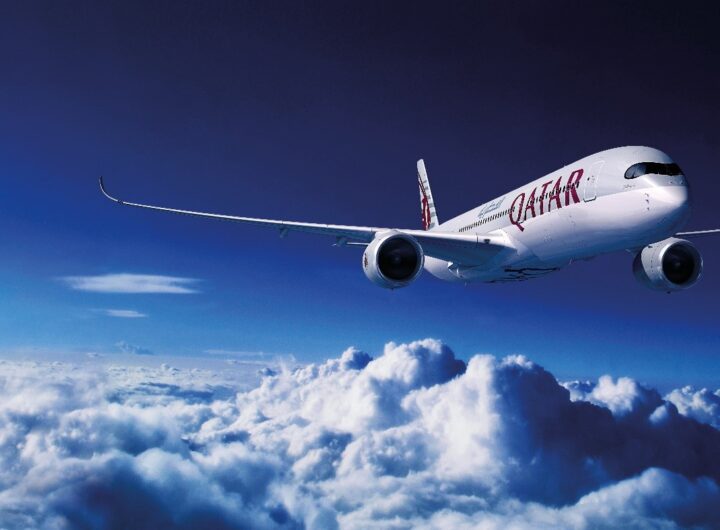One of the mega buzz topics in travel right now is whether cheap fares will disappear, as we see airlines continue to go file for bankruptcy. Headlines keep splashing onto front pages around the globe, sounding the alarm that they will. In terms of supply and demand, it’s easy to make a case for “yes”, but it’s not that simple, and it’s much more likely that the answer is no.
The head of the International Airline Transport Association (IATA) a few weeks ago, declared:
“If social distancing is imposed, cheap travel is over”
Mr De Juniac runs the largest airline trade body, so it is his job to sound the alarm of fear, in hopes of bolstering efforts to save airlines, jobs, and ease restrictions. It is a noble cause, and one I’m generally in line with, but don’t forget that Mr De Juniac doesn’t care about cheap fares.
In fact, he has argued to governments that airlines should be allowed to break the laws and forgo refunds to passengers. He is not wrong about social distancing being a problem though, and previous studies have shown little to no efficacy in combating spread, since everyone is still within 2m, and has been since entering the airport prior to flight.
But that’s not what matters, what matters is that either way, airlines can’t afford to get rid of cheap fares, they’ll just be different, and probably fewer of them offered on each flight, and the rest of the airfares will most likely get more expensive.
Let’s assume airlines don’t block middle seats, and travel returns much like it was before.
First, it’s important to understand how airlines actually sell flights. To explain it in a quite simple way, Airlines sell some tickets at $5,000, some at $1,000 and some at $50. Most of the money is made on higher fares, so it’s often the lowest fares that are the icing on the cake. Last year it was fair to argue that booming corporate and business class travel was subsidizing cheap economy deals.
The truth is, airlines cannot afford to get rid of their low fares, because they’re more than just a price, they’re a marketing tool. These prices drive the incremental business airlines will desperately need, and the free coverage that comes with it.
With travel demand nowhere near what it was, the airline game will be all about tempting those marginal “take it or leave it” customers onboard their planes. Getting those bums in seats is vital to the recovery. Besides, when airfares are ridiculously low, even major news sources start talking about. This way it gets the mass market interested.
Those trips you want to take, but do not need to take are the key example. If an airline, which you know previously had $1000 round trip fares to Europe and is advertising $1500 fares, you are not going unless you absolutely need to. If you absolutely need to go, you are paying $1500 anyway. The same goes for short-haul flights. If Virgin and Jetstar charged $50 one way before, and that was attractive to you, you might give it a pass at $100 each way, if you don’t need to go.
That dreamy idea of a long weekend away is romantic when it’s low priced, but not when it’s triple, or becomes a more significant amount.
Being able to tempt you, the potential traveller seeking a flight to a dream destination, to at least come to the website and consider booking is everything, so I fully believe the lowest fares will remain. Chances are that you will not click that banner ad and book if they are not shoving compellingly low fares in your face.
It is important to remember that the key metric for at least 95% of travellers from now on in choosing an airline is the price and price alone. It will force even the airlines which want to charge more into competing on low fares.
The CEO of Qantas, said that while there’s a lot we don’t know, particularly around timing, he outlined three things “I think we can be pretty certain of”.
Here they are, in his own words:
1. It will be competitive
The Australian domestic market has huge potential. And for that reason, this is never going to be a one airline town – or it wouldn’t be one for long. Stiff competition has made Qantas better over the years and we don’t want that to stop now. And, frankly, the regulatory pressures on entrenched monopolies tend to make them unattractive.
2. There will be lots of low fares
Airlines will be keen to stimulate travel demand to get their people and aircraft back to work and restart their cashflow pipelines, repairing the damage done by the devastating and sudden drop in revenue. That’s good news for consumers because it means plenty of good deals.
3. Domestic travel will start well before international
Australia has done a remarkable job of flattening the curve and cutting coronavirus infection rates. We have to be careful not to take the brakes off too early, but restrictions on domestic travel are likely to lift well before international travel. That’s great news for our local tourism industry, with more people holidaying in Australia to start with.
Now the catch is, there will be fewer seats allocated on the low fares on each flight, and you might feel the interest, therefore you will need to be faster, and smarter.
To make up for fewer overall passengers and maintaining low fares, airlines will have to charge more for the rest of the cabin, and they likely will. There are always people who “need” to get somewhere, and with these types of travellers, airlines have more ability to play with the fare increase, even though it rarely feels fair when you’re one of those people.
Assuming airlines and governments around the globe find more creative or effective ways to stop the spread of any health issue, and middle seats are not blocked, the low fares we were enjoying are not going anywhere. If airlines built on low fares exist, all the other airlines built otherwise will have to play along.
The lowest prices for your dream getaway will still be there, you will just need to be quicker on the draw.
In conclusion, beware low fares will not last. Assuming the virus dilemma is solved, many are hoping for a strong recovery in 2022.
Stay safe!

 Australia’s Travel Volume Is Still Down Compared To 2019
Australia’s Travel Volume Is Still Down Compared To 2019  September Passenger Demand Remains High
September Passenger Demand Remains High  Countries That Require Australians To Be Vaccinated
Countries That Require Australians To Be Vaccinated  IATA Shows Strong International Travel Recovery
IATA Shows Strong International Travel Recovery  What Are Travellers Looking For In The Year Of Recovery
What Are Travellers Looking For In The Year Of Recovery  Qatar Airways Resumes Flights To Malta: Enhancing International Connectivity
Qatar Airways Resumes Flights To Malta: Enhancing International Connectivity  Viking Cruises Unveils 14 New Ocean Itineraries for 2026 & 2027
Viking Cruises Unveils 14 New Ocean Itineraries for 2026 & 2027  Seabourn Elevates Onboard Dining with New Menus and Local Flavours
Seabourn Elevates Onboard Dining with New Menus and Local Flavours  Oceania Cruises Marks a New Era with the Construction of the First Sonata Class Ship
Oceania Cruises Marks a New Era with the Construction of the First Sonata Class Ship 